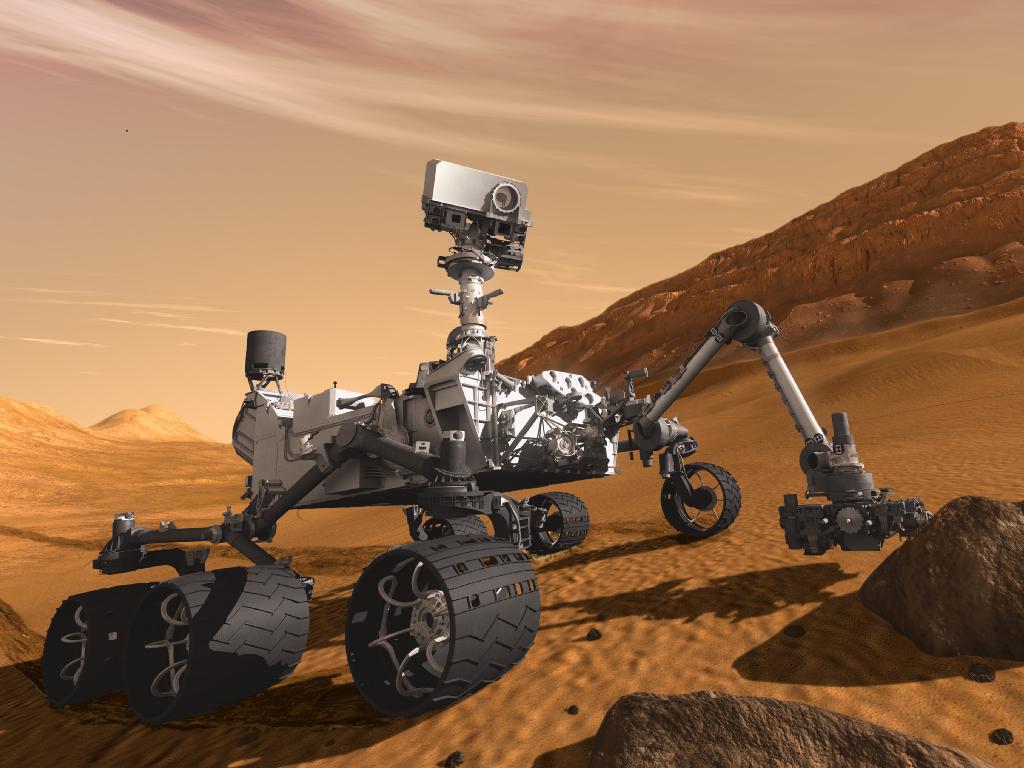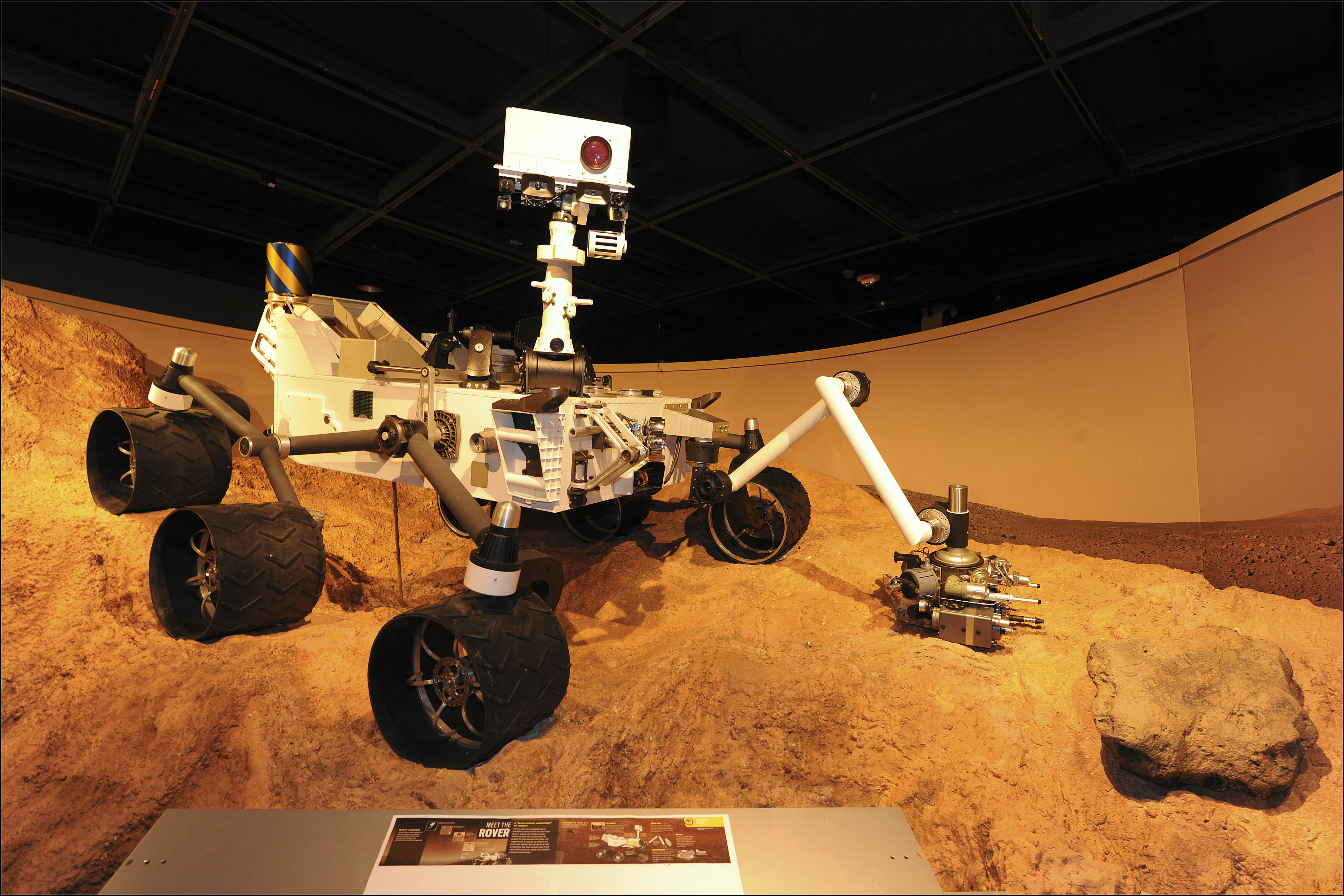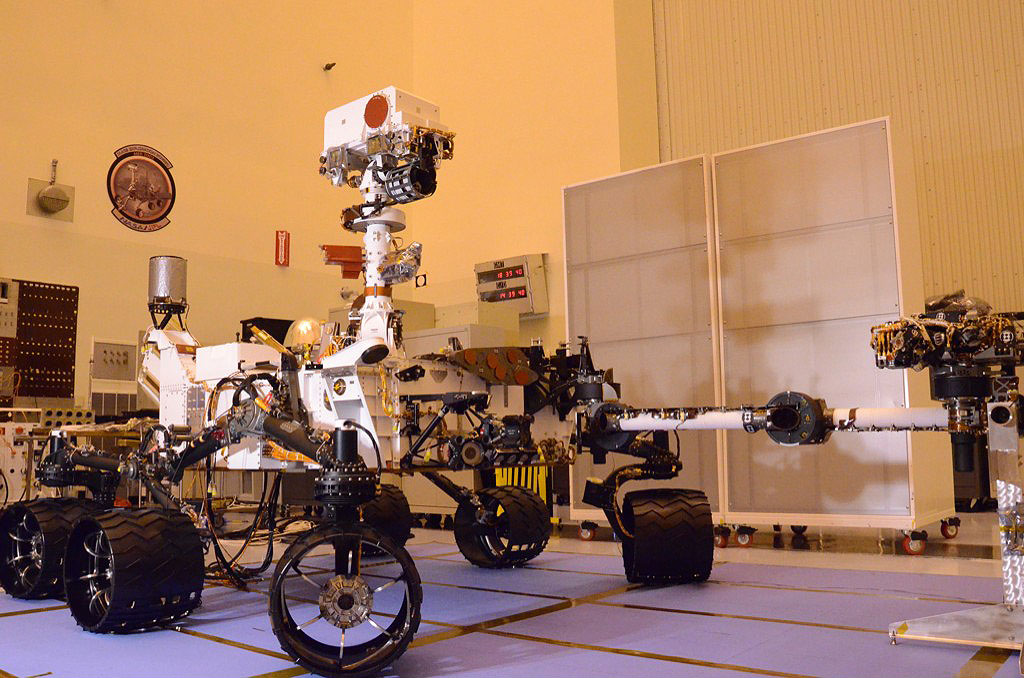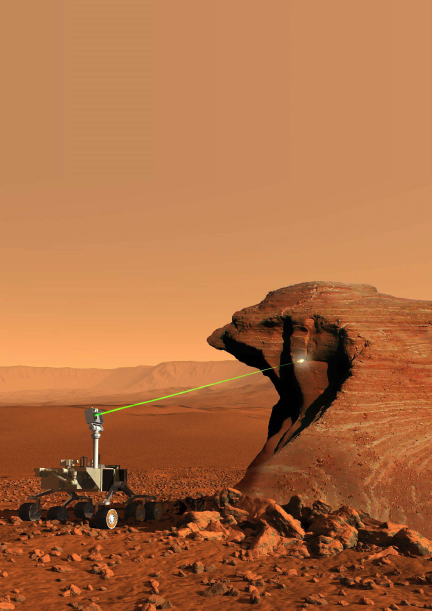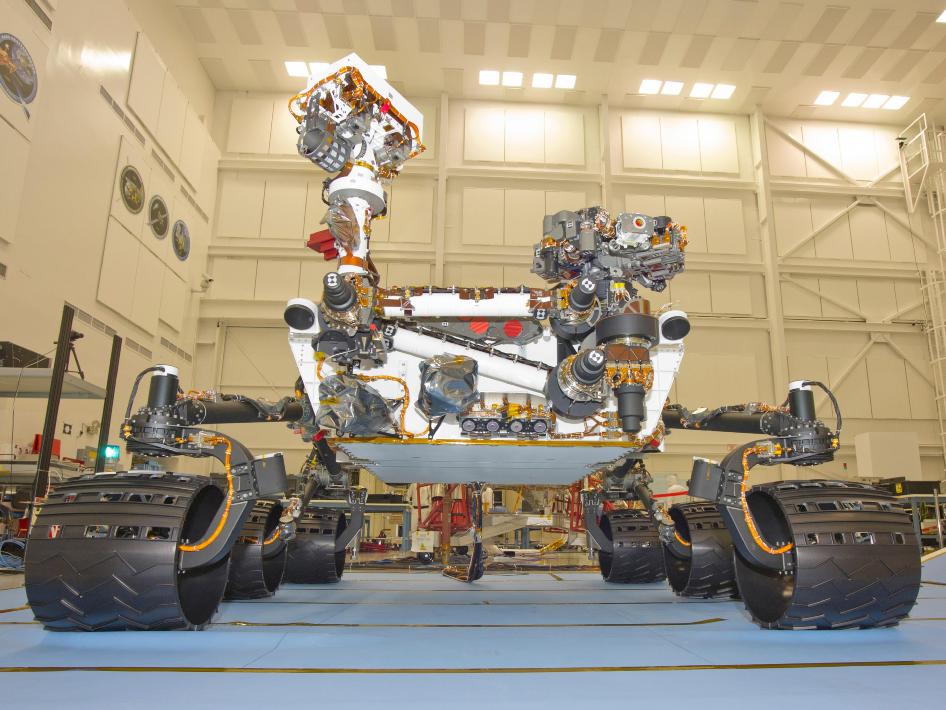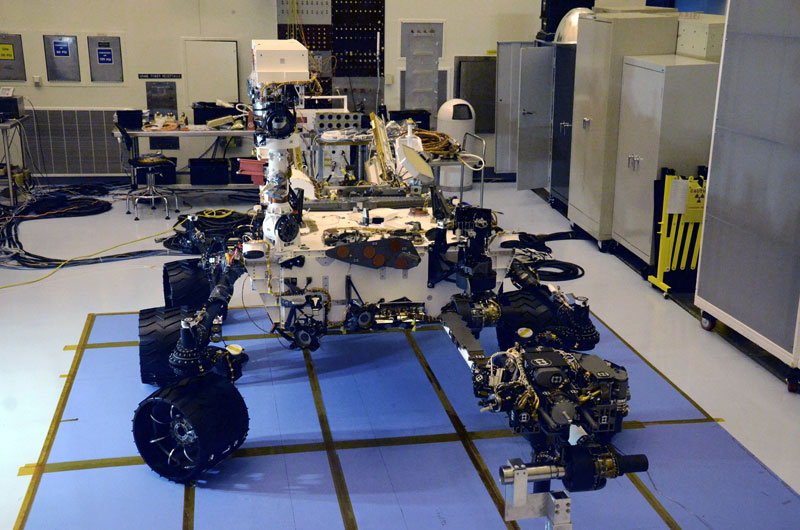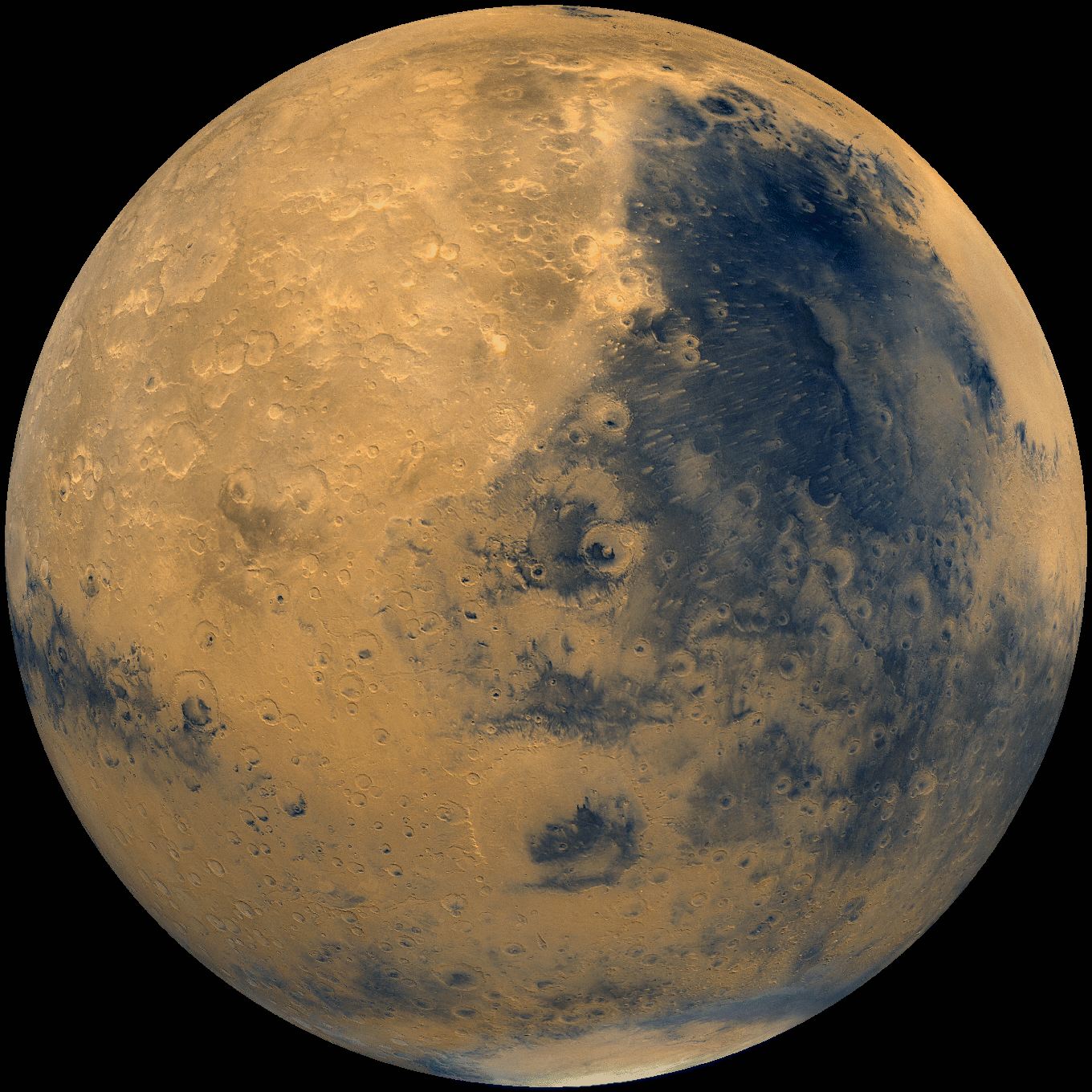NASA's Huge Mars Rover Curiosity: 11 Amazing Facts
Mars Exploration on Overdrive
NASA's newest Mars rover is headed for the Red Planet, a 1-ton robotic beast that will take planetary exploration to the next level.
The car-size Curiosity rover is the centerpiece of NASA's $2.5 billion Mars Science Laboratory (MSL) mission, slated to blast off Saturday (Nov. 26) from Cape Canaveral Air Force Station in Florida. Curiosity's main goal is to assess whether the Red Planet is, or ever was, capable of supporting microbial life.
The rover will employ 10 different science instruments to help it answer this question once it touches down on the Red Planet in August 2012. Here's a brief rundown of these instruments (and one more on the rover's heat shield):
Curiosity's Eyes
The MastCam is Curiosity's workhorse imaging tool. It will capture high-resolution color pictures and video of the Martian landscape, which scientists will study and laypeople will gawk at.
MastCam consists of two camera systems mounted on a mast that rises above Curiosity's main body, so the instrument will have a good view of the Red Planet environment as the rover chugs through it. MastCam images will also help the mission team drive and operate Curiosity. [Photos of NASA's Curiosity Rover]
A Sleuth on Mars
MAHLI will function much like a high-powered magnifying glass, allowing Earthbound scientists to get up-close looks at Martian rocks and soil. The instrument will take color pictures of features as tiny as 12.5 microns — smaller than the width of a human hair.
MAHLI sits on the end of Curiosity's five-jointed, 7-foot (2.1-meter) robotic arm, which is itself a marvel of engineering. So mission scientists will be able to point their high-tech hand lens pretty much wherever they want.
Breaking space news, the latest updates on rocket launches, skywatching events and more!
The View From Above
MARDI, a small camera located on Curiosity's main body, will record video of the rover's descent to the Martian surface (which will be accomplished with the help of a hovering, rocket-powered sky crane). [Video: Curiosity's Peculiar Landing]
MARDI will click on a mile or two above the ground, as soon as Curiosity jettisons its heat shield. The instrument will then take video at five frames per second until the rover touches down. The footage will help the MSL team plan Curiosity's Red Planet rovings, and it should also provide information about the geological context of the landing site, the 100-mile-wide (160-km) Gale Crater.
Sampling Mars
SAM is the heart of Curiosity; at 83 pounds (38 kilograms), it makes up about half of the rover's science payload.
SAM is actually a suite of three separate instruments — a mass spectrometer, a gas chromatograph and a laser spectrometer. These instruments will search for carbon-containing compounds, the building blocks of life as we know it. They will also look for other elements associated with life on Earth, such as hydrogen, oxygen and nitrogen.
The SAM instrument suite is located in Curiosity's main body. The rover's robotic arm will drop samples into SAM via an inlet on the rover's exterior. Some of these samples will come from the interior of rocks, powder bored out by a 2-inch (5-centimeter) drill situated at the end of the arm.
None of Curiosity's predecessors could get deep into Martian rocks, so scientists are excited about the drill.
"For a geologist that studies rocks, there's nothing better than getting inside," said MSL deputy project scientist Joy Crisp, of NASA's Jet Propulsion Laboratory in Pasadena, Calif.
Chemistry of Mars
CheMin will identify different types of minerals on Mars and quantify their abundance, which will help scientists better understand past environmental conditions on the Red Planet.
Like SAM, CheMin has an inlet on Curiosity's exterior to accept samples delivered by the rover's robotic arm. The instrument will shine a fine X-ray beam through the sample, identifying minerals' crystalline structures based on how the X-rays diffract.
"This is like magic to us," Crisp told SPACE.com. X-ray diffraction is a leading diagnostic technique for Earthbound geologists, she explained, but it hasn't made it to Mars yet. So CheMin should help Curiosity provide more definitive mineral characterizations than previous Mars rovers such as Spirit and Opportunity have been able to achieve.
Curiosity Has a Laser (Pew, pew, pew!)
For sheer coolness, it's tough to beat ChemCam. This instrument will fire a laser at Martian rocks from up to 30 feet (9 meters) away and analyze the composition of the vaporized bits.
ChemCam will thus enable Curiosity to study rocks that are out of reach of its flexible robotic arm. It will also help the mission team determine from afar whether or not they want to send the rover over to investigate a particular landform.
ChemCam is composed of several different parts. The laser sits on Curiosity's mast, along with a camera and a small telescope. Three spectrographs sit in the rover's body, connected to the mast components by fiber optics. The spectrographs will analyze the light emitted by excited electrons in the vaporized rock samples.
The Search for Mars Water
DAN, located near the back of Curiosity's main body, will help the rover search for ice and water-logged minerals beneath the Martian surface.
The instrument will fire beams of neutrons at the ground, then note the speed at which these particles travel when they bounce back. Hydrogen atoms tend to slow neutrons down, so an abundance of sluggish neutrons would signal underground water or ice.DAN should be able to map out water concentrations as low as 0.1 percent at depths up to 6 feet (2 m).
Elements of Mars
APXS, which sits at the end of Curiosity's arm, will measure the abundances of various chemical elements in Martian rocks and dirt.
Curiosity will place the instrument in contact with samples of interest, and APXS will shoot out X-rays and helium nuclei. This barrage will knock electrons in the sample out of their orbits, causing a release of X-rays. Scientists will be able to identify elements based on the characteristic energies of these emitted X-rays.
Spirit and Opportunity were outfitted with a previous version of APXS and used the instrument to help elucidate the prominent role water has played in shaping the Martian landscape. [Latest Mars Photos From Spirit and Opportunity]
Radiation Alert
The toaster-size RAD is designed specifically to help prepare for future human exploration of Mars. The instrument will measure and identify high-energy radiation of all types on the Red Planet, from fast-moving protons to gamma rays.
RAD's observations will allow scientists to determine just how much radiation an astronaut would be exposed to on Mars. This information could also help researchers understand how much of a hurdle Mars' radiation environment might have posed to the origin and evolution of life on the Red Planet.
Weather on Mars
This tool, which sits partway up Curiosity's mast, is a Martian weather station. REMS will measure atmospheric pressure, humidity, wind speed and direction, air temperature, ground temperature and ultraviolet radiation.
All of this information will be integrated into daily and seasonal reports, allowing scientists to get a detailed look at the Martian environment.

Michael Wall is a Senior Space Writer with Space.com and joined the team in 2010. He primarily covers exoplanets, spaceflight and military space, but has been known to dabble in the space art beat. His book about the search for alien life, "Out There," was published on Nov. 13, 2018. Before becoming a science writer, Michael worked as a herpetologist and wildlife biologist. He has a Ph.D. in evolutionary biology from the University of Sydney, Australia, a bachelor's degree from the University of Arizona, and a graduate certificate in science writing from the University of California, Santa Cruz. To find out what his latest project is, you can follow Michael on Twitter.
